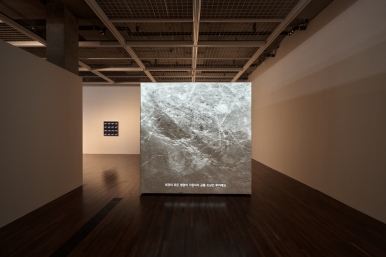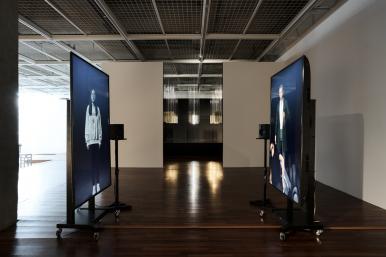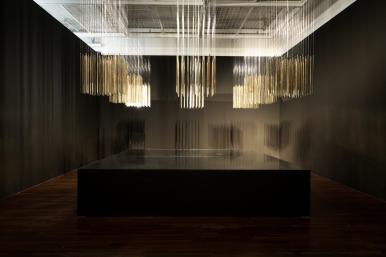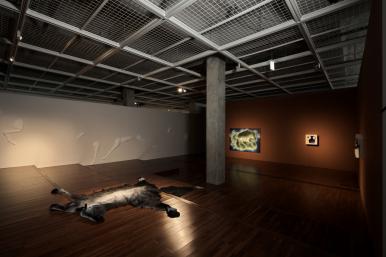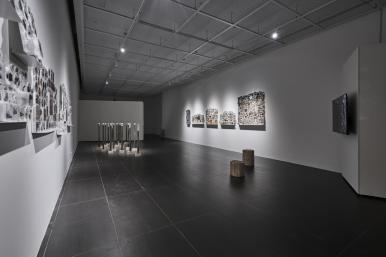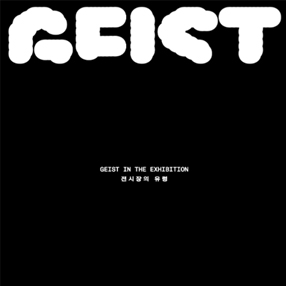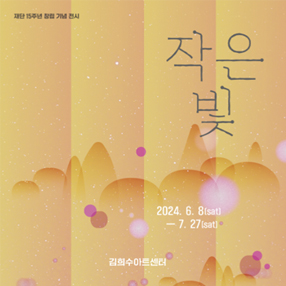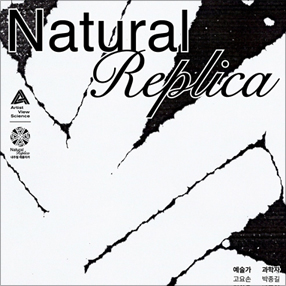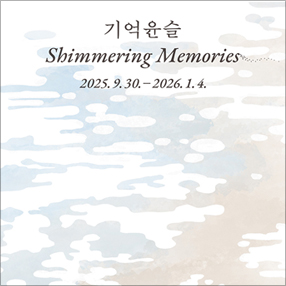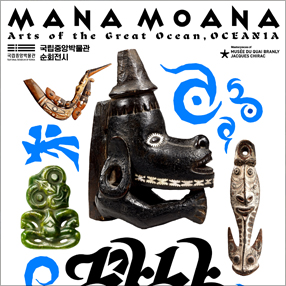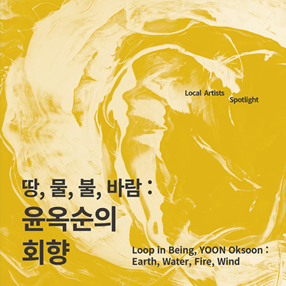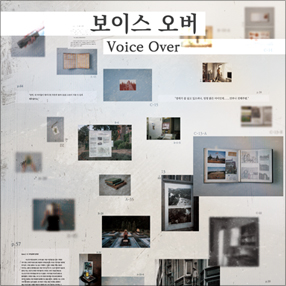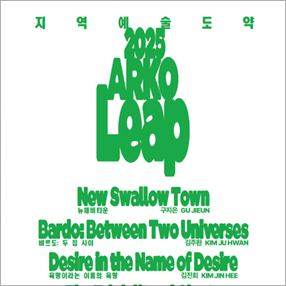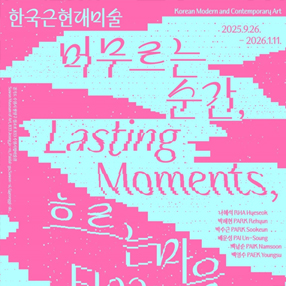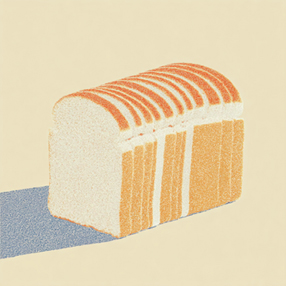본문
-
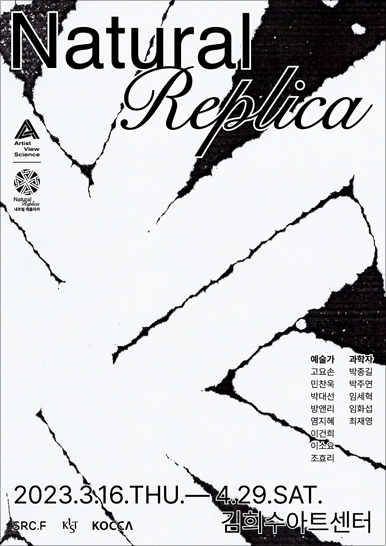
전시포스터
-
염지혜
심바이오플롯 : 함께 사는 터, 영상, 20분, 2020
민찬욱
디지털 휴먼은 무엇인가?, 2채널 영상, 가변크기, 2022
민찬욱
디지털 자아는 스스로 죽을 수 있는가?, 스테인리스 스틸, 브라스, 아크릴, LED, 전자기기 및 부품, 와이어, 가변크기, 2023
고요손
기억저장체, 자석, 회전모터, 머리카락, 스티로폼, 레진, 핸드폰, 가변크기, 2023
방앤리
아이샤인, 멀티채널 영상 설치, 사운드, 텍스트, 3D 애니메이션, 디지털 휴먼, 가구, 혼합매체, 가변크기, 2023
조효리
「화석」, 발포폴리스타이렌, 벽에 설치, 2023 / 「섬」, 캔버스에 아크릴, 색연필, 종이, 162.1x227.3cm, 2023 / 「항아리」, 발포폴리스타이렌에 아크릴, 52x52cm, 2023, 「말모형 페인팅 키트」, 발포폴리스타이렌에 아크릴, PLA 필라멘트, 에어브러쉬, 플라스틱용기, 가변크기, 2023 / 「전개도」, 실리콘에 아크릴, 가변크기, 2023 / 「갤럽」, 발포폴리스타이렌에 아크릴, PLA 필라멘트, 80x80cm, 2023
이소요
「흙으로」, 지질시추 시료와 현미경 이미지, 가변크기, 2023, 「플라스티쿼티」, 지질시추 시료와 단채널 비디오, 가변크기, 2022/2023 / 「프라임 무버: 버전 III」, 지질시추 시료와 미생물 군집 자료, 가변크기, 2022/2023
Press Release
케임브리지 영어 사전은 ‘natural’을 ‘인간이나 기계가 아닌 자연으로부터 만들어지거나 유래한 것’이라고 정의한다. 과연 지금 이 시대 natural도 그런 뜻일까. 인류의 역사와 기술의 발전은 자연의 산물인 인간을 자연에서 배제하고 분리, 대립시키며 사회적 규제와 범주 안에서 ‘자연적’인 것을 정의한다. 가령 식음료에 들어간 자연의 풍미(natural flavors)는 자연 식재료에서 추출되고 가공된 첨가물이다. 그럼에도 불구하고 자연의 풍미는 이 재료가 어떤 화학적 처리 과정에서 생겨나는지와 관계없이 자연적이라는 범주와 규제 속에 있는 것이다. 자연선택설(natural selection) 역시 그렇다. 이 가설을 발견하고 주장하기 위해서는 실험 관찰이라는 인간의 개입이 반드시 필요하기 때문이다. 참으로 역설적이지 않은가. 인간이 자연의 산물이고 자연의 일부라면 인간도 생물학적 측면에서 자연적이라 할 수 있다. 생명이 곧 DNA의 자기 복제 기능에 의존한다는 사실은 이제 너무나 널리 알려진 사실이다. DNA 이중나선에 새겨진 유전 정보는 생명의 형질을 조절하고 복제한다. 그렇다면 인간 존재 자체가 '자연 복제(natural replica)'의 산물이 아닐까?
민담과 신화에 투영되던 복제에 대한 인간의 열망은 19세기 태엽의 발명과 더불어 스스로 움직이는 오토마타(automata)를 탄생시켜 당시 사람들을 열광케 했다. 세계가 거대한 시계와 같다는 기계론적 세계관은 훗날 사이보그나 로봇의 형태로 발전한다. 20세기 중반 인간 자체를 기계적인 원리로 설명하려는 시도는 인간 두뇌 작용을 모방하는 사이버네틱스(cybernetics) 연구로 이어져 인공지능을 원리적으로 가능하게 했다. 인간의 뇌가 작동하는 방식으로 재구성된 인공지능은 이제 단순한 도구에 머무르지 않는다. 유럽연합(EU)은 2017년 인공지능 로봇에 '전자 인간(electronic personhood)'이라는 법적 지위를 부여하는 결의안을 통과시켰으며, 생물 진화 과정을 인간이 스스로 진행하여 생물학적 한계를 극복하는 트랜스 휴먼, 포스트 휴먼의 개념은 이제 많은 사람에게 익숙하다. 그렇다면 이 시점에 인간과 기계라는 이분법적 사고를 넘어서서 우리가 가져야 할 태도는 무엇일까. 여기서 새로운 ‘인간성’을 발견할 수 있을까. 이 시대 인간에 의해 범주화되고 규범화된 프레임이 만들어낸 ‘자연성’이란 무엇일까.
전시는 거대한 파도를 연상케 하는 이건희의 <제4의 물결>로 시작한다. 얽히고설킨 듯 보이지만 규칙적으로 프로그래밍된 가상 세계를 규격화된 크기의 화면으로 연결해 바다의 이미지를 만들어 낸다. 안과 밖이 붙어 있고 시점에 따라 그 둘이 서로 바뀌기도 하는 이 대형 회화 작품은 가상 세계가 현실 세계를 원형으로 하고 있음을 보여준다. 아트갤러리에 들어서면 만나게 되는 염지혜의 <심바이오플롯>은 복제와 진화 그리고 소멸을 통해 공생하는 지구상의 모든 존재에 ‘함께 살기’를 제안한다. 지구의 생명이 환경에 적응하고 변화해 온 자취가 보여주는 서사는 사회적 규제와 범주 속에 갇힌 ‘자연성’이 얼마나 인간 중심적인지를 보여준다. 인간을 복제한 디지털 휴먼, 나아가 디지털 생명체의 물리적 몸체를 심미적으로 보여주는 민찬욱의 <디지털 자아는 스스로 죽을 수 있는가?>는 알 수 없는 기계음을 내며 숭고미마저 자아내는 인공지능 큐브들이 인간은 알아들을 수 없는 언어로 대화하는 모습을 보여준다. 이 작품을 통해 작가는 '소통이 가능한 디지털 생명체를 존재론적으로 인정해야 하지 않을까'라는 질문을 던진다.
민담을 모티브로 한 머리카락 클론들로 존재와 객체, 인간과 사물의 교차점을 보여주는 고요손의 작품과 '마이브리지의 말'을 모티브로 한 조효리의 작품들은 다양한 차원에서 주제에 접근하여 복제의 과정을 유희적으로 파노라마처럼 펼쳐낸다. 이들의 작품은 인간 복제에 대한 열망과 욕망이 얼마나 일상적이고 자연스러운 일인지를 이야기한다. 방앤리의 <아이샤인>은 인간의 뇌를 모사한 인공지능의 판단과 그 결과를 ‘자율주행 자동차의 사고’라는 사건을 통해 서사적으로 보여준다. 마치 '예언자'와도 같은 AI 에이전트는 역설적이게도 기술을 통해 수집한, 우리의 감각기관이 채 인지하지 못할 만큼 정교한 과거의 데이터를 이용하고 재배열하여 미래를 예언한다. 이소요는 쓰레기 매립지 속 세월이 흐르며 분해된 플라스틱의 흔적을 찾아가면서, 자연물을 복제하여 생산한 인공물과 그 주변의 생물, 광물이 물질대사를 통해 함께 어우러질 가능성을 시각적으로 상상하게 한다.
《Natural Replica》는 원형에 대한 끝없는 탐구, 인간 복제의 열망과 디지털 시대의 연결 고리를 보여주고 질문한다. "어떤 세계에서 어떤 인간으로 살아내는 것이 가장 ‘자연적’인가?" 이 전시는 자연과 역사, 물질과 비물질, 인간과 사물의 교차점에서 ‘복제’와 ‘원형’ 사이의 이야기로 미래에 대한 우리의 인식과 실천의 범위를 환기하고자 한다.
참여작가 : 고요손, 민찬욱, 박대선, 방앤리, 염지혜, 이건희, 이소요, 조효리
참여과학자 : 박종길, 박주연, 임세혁, 임화섭, 최재영
The Cambridge Dictionary of English defines ‘natural’ as that which is “made or caused by nature and not by people or machines”. This raises the question of whether such a definition still holds up in this day and age. Human history and the advancement of technology has involved separating nature – of which humans ourselves are a product – from humans and pitting the two as opposites while defining what is ‘natural’ in terms of social norms and confines. For instance, ‘natural flavoring’ found in soft drinks are in fact additives manufactured using substances extracted from natural ingredients. However, regardless of the chemical processing that went into creating these substances, ‘natural flavoring’ is deemed to fall within the confines and norms of what’s considered ‘natural’. The same might be said for the theory of natural selection, since human intervention, in the form of observation and experimentation, was critical to its discovery and verification. This is quite paradoxical. Insofar as humans sprang from nature, and are thus a part of it, one could argue that humans are also ‘natural’, at least in the biological sense. It is well-understood that the phenomenon of life depends on the self-replicating capacity of DNA. The genetic information encoded within the double helix structure of DNA moderates and replicates the traits of lifeforms. If so, human existence itself might be regarded as an instance of a ‘natural replica’.
The human drive for replication, which had long been projected onto folk tales and myths, led to the invention of the winding spring and by the 19th century, the creation of the self-operating machine – the much-celebrated automaton. The mechanistic worldview, which equated the whole world to a gigantic clock, would later give birth to cyborgs and robots. Mid-20th century attempts to explain humans according to mechanical principles led to the study of cybernetics, which sought to mimic the functioning of the human brain. This made the concept of artificial intelligence feasible in principle. AI mimicking the functioning of the human brain has progressed well beyond the realm of instrumentality. In 2017, the European Parliament passed a resolution recognizing the legal status of ‘electronic personhood’ for AI robots. Likewise, the concepts of trans- or post-humanism, where humans take control of the evolutionary process to overcome biological limitations, have now become familiar to many. What, then, is the stance we should take at this point in time, as we move beyond the man-machine dichotomy? Might there be some new ‘humanity’ to be found here? What is the nature of the ‘natural’, as conceived within the frames that were categorized and delineated by humans in this day and age?
The first piece in the exhibition is < The 4th Wave > by Gunhee Lee. Resembling a giant wave, the seemingly haphazardly intertwined elements are actually rendered by connecting a virtual world, programmed according to a set of rules, to a screen of standardized dimensions. The end effect is a likeness of the sea. This large-format piece, where the inside / outside are adjacent and occasionally alternate, demonstrates that the real world is the archetype behind the virtual world. Progressing further into the gallery, < Symbioplot > by Jihye Yeom comes into view. The piece calls for all creatures on earth, who coexist amid replication, evolution, and extinction, to ‘cohabit’. The narrative that emerges from how life on Earth has kept evolving and adapting to the environment goes to show how anthropocentric the conception of the ‘natural’ is, as it is trapped within the confines of social norms and categories. Chanwook Min’s < Can the Digital Ego Commit Suicide? > offers an aesthetic view of the digital human, or digital replica of a human, and the physical form of digital lifeforms. In this piece, AI cubes communicate with each other using mechanical signals in a language unintelligible to humans, to achieve an almost sublime beauty. Through the work, Min poses the question of whether digital lifeforms that are capable of communication might not be better regarded as ‘beings’ in their own right.
In Goyoson’s piece, clones of hair strands follow a folk tale motif to present the intersections of beings / objects and humans / matter, while Hyori Cho’s piece follows the motif of Muybridge’s ‘The Horse in Motion’. These works approach their themes from various dimensions, playfully portraying the process of replication in unfolding panoramas to convey how ordinary and natural the human drive and desire for replication is. Bang & Lee’s < Eyeshine > features an AI that mimics the working of the human brain, structuring its judgments and their outcomes into a narrative of an event – an accident involving a self-driving car. A ‘prophet’-like AI agent scours and churns through past data, collected with far greater precision than would be possible via the human senses, to derive predictions about the future. Soyo Lee follows traces of degradation in the landfill environment and allows us to speculate upon the possibility of metabolism among replicated artifacts and living and non-living materials around them.
Throughout 《Natural Replica》, there is ceaseless exploration of the ‘original’, as well as investigations and expositions of the links between the digital age and the human drive for replication. The question posed is “In what world, and as what humans, is it most ‘natural’ to go about living in?” This exhibition follows the tales of the ‘replica’ and the ‘original’ along various intersections of nature / history, the material / the immaterial, and humans / matter, thus calling attention to the scope of our perceptions and practices regarding the future.전시제목AVS 내추럴 레플리카(Natural Replica)
전시기간2023.03.16(목) - 2023.04.29(토)
참여작가 고요손, 민찬욱, 박대선, 방앤리, 염지혜, 이건희, 이소요, 조효리
관람시간월-금 01pm - 07:00pm
토 12:00am - 07:00 pm휴관일매주 일요일 휴관
장르회화
관람료무료
장소김희수아트센터 Soorim Cultural Foundation (서울 동대문구 홍릉로 118 (청량리동, 수림문화재단) )
주최수림문화재단, 한국과학기술연구원, 한국콘텐츠진흥원
주관수림문화재단, 한국과학기술연구원, 한국콘텐츠진흥원
연락처02-962-7911
Artists in This Show
김희수아트센터(Soorim Cultural Foundation) Shows on Mu:um
Current Shows




